When the early Texas rancher Charles Goodnight invented the chuck wagon in 1866, he didn’t just presage today’s food trucks; he solved an immediate problem, which was how to keep cowboys on the remote parts of the range well-fed. During the rough-and-tumble frontier days, Texas demanded such inventiveness from its inhabitants just so they could survive. Through the years, as Texans have tamed the land, their signature moxie has led to many more triumphs, not just in the fight to survive but also in the quest to advance. Indeed, there’s a whole lot for which the world can thank Texas. The fields of ranching, oil and gas exploration, weaponry, medicine, science, and high technology have all been forever affected by the touch of a Texan. So too have the arenas of sports, music, entertainment, and the culinary arts. Nowadays, Texans like the ones below, every bit as tenacious as their predecessors, are inventing new ways to do everything from saving lives to serving brisket. The future is now.
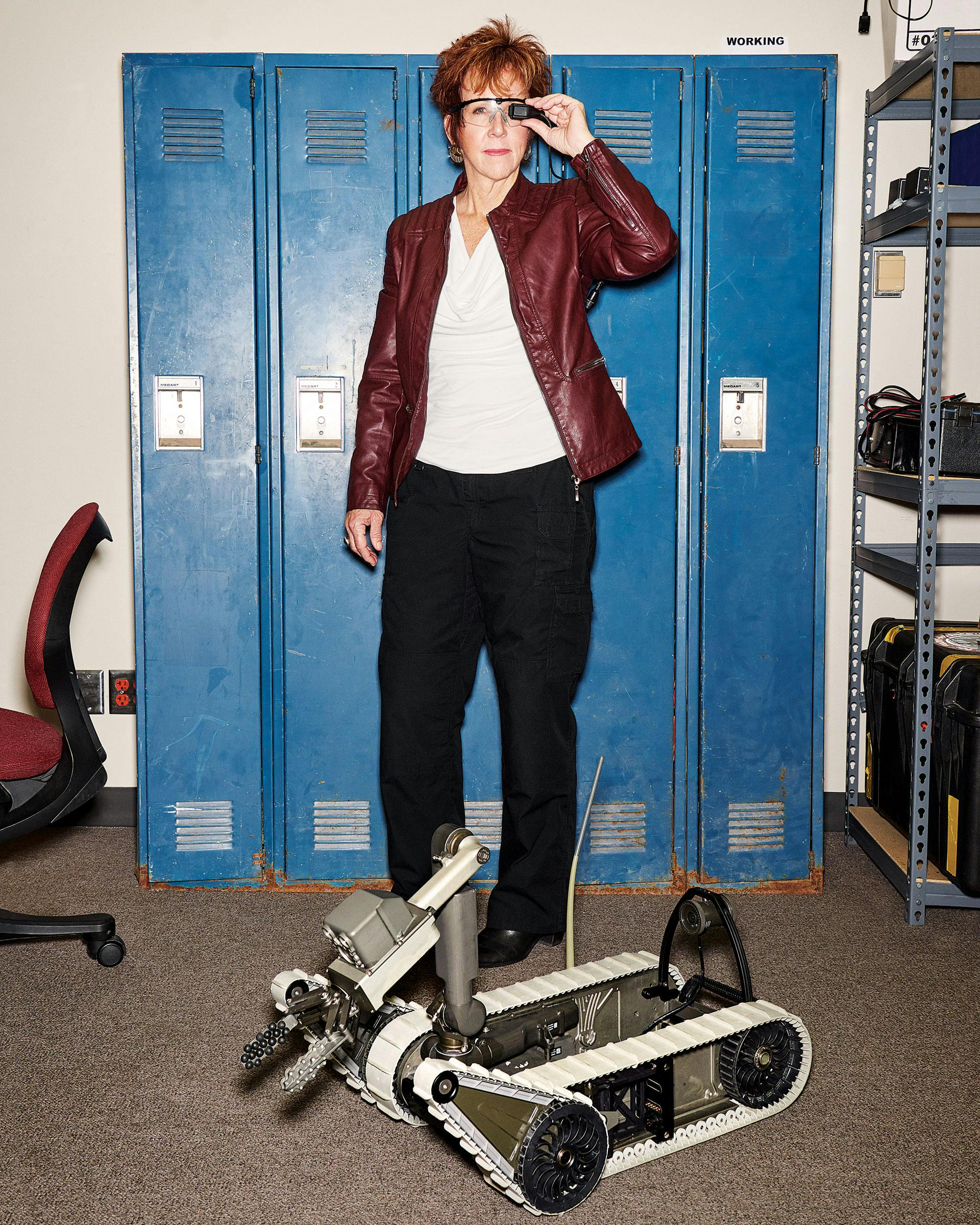
The Disaster Roboticist
Robin Murphy
During Hurricane Harvey, people from a subdivision in Fort Bend County were anxious to return home and called local officials to say that they had heard the neighborhood was dry. Could they go back to their houses? County officials asked the Center for Robot-Assisted Search and Rescue, a nonprofit based in College Station, to fly drones over the neighborhood to assess the situation. “The roads were all flooded,” remembers Robin Murphy, the center’s director. “Oh, look at the nice deer floating through it, and the sewage on top. Definitely don’t want to go walking around in that kind of water.”
Murphy, Texas A&M’s Raytheon Professor of Computer Science and Engineering, is one of the world’s leading innovators in the use of robots in search-and-rescue and disaster-recovery operations. She develops computer programs and artificial intelligence that combine with robots—whether they fly, drive on land, or dive under water—to turn raw data into information that emergency managers can use to make instant decisions on how to deploy personnel.
Working with Fort Bend officials, Murphy’s team flew a record 119 Harvey-related missions to locate potential flood zones, find routes for rescuers, assess damage, and document flooding for federal assistance requests—processes that once took weeks and could now be done in days. Then, with two days to prepare, the team deployed to Florida for Hurricane Irma.
—R. G. Ratcliffe
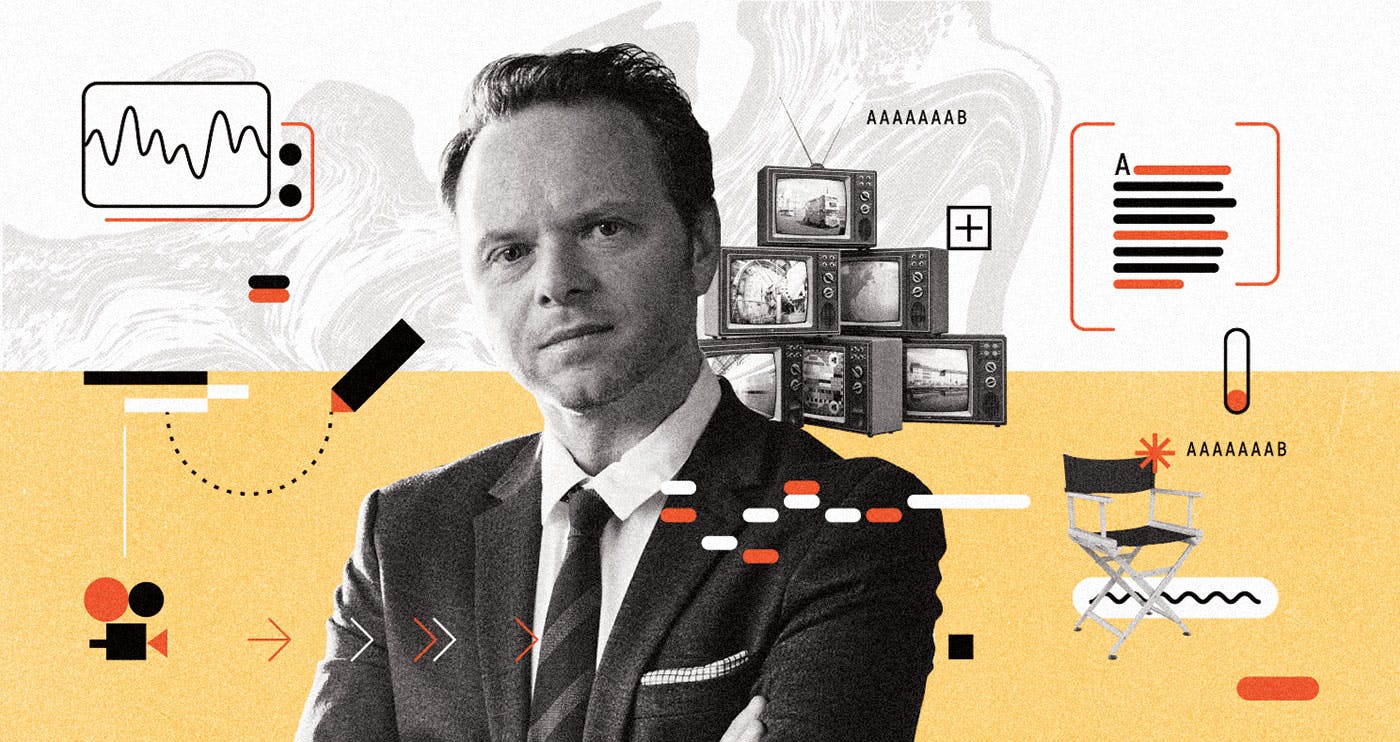
The Hollywood Outsider
Noah Hawley
The most innovative person working in television today escapes Hollywood for Texas every weekend. Noah Hawley, the showrunner behind FX’s critically adored Fargo (22 Emmy nominations in three seasons) and the network’s visually and conceptually intoxicating Legion (an X-Men spinoff and ode to Kubrick-ian dystopia) commutes to Los Angeles from Austin.
Being an outsider might be his best asset: rather than get sucked into conventional ways of thinking, he sees potential in projects where others don’t. His initial pitch for Fargo was a nineteen-page document that threw out the characters and plot from the beloved Coen Brothers film on which his show is based. And when he was asked to develop an idea around X-Men, he picked an obscure character who never had his own superhero costume or appeared in a comic book title.
Hawley honed his craft in the mid-aughts as a writer on the Fox procedural Bones and as a best-selling novelist. Now, in TV’s golden age, he is using Fargo, Legion, and his in-development adaptation of Kurt Vonnegut’s Cat’s Cradle to push the form in new and unexpected ways. “Qualitative greatness is now so routine that the question becomes ‘Why should people watch it?’ We’ve perfected the art of the emotional roller-coaster ride,” he says. “So what else can the roller coaster do? What happens when you take it off the rails and the experience becomes a structural roller coaster, or a conceptual roller coaster, at the same time that it’s an emotional ride?”
—Dan Solomon

The Brain Trainer
Sandra Bond Chapman
Your average Texan knows how to take care of her heart: eat a balanced diet, exercise, get regular checkups. But the notion of preventive care for the brain—and the idea that cognitive training can help people recover from brain injuries and reverse age-related decline—is a relatively new one, even in neuroscience. “When I say I do brain health, most people don’t even know what that means,” says Dallas cognitive neuroscientist Sandra Bond Chapman. “People either think, ‘I’m fine,’ or ‘I’ve got Alzheimer’s disease, and there’s nothing I can do.’ ”
But there is. Brain-imaging technology, Chapman says, has offered evidence that more efficient and deep thinking increases brain blood flow and even thickens the cortex, which controls reasoning, planning, problem-solving, and decision-making. “How you think literally changes your brain.”
Chapman founded the research-focused Center for BrainHealth at the University of Texas at Dallas and its Brain Performance Institute, which offers practical applications of that science. This past October, the BPI opened in a new glass egg of a building on Mockingbird Lane. There, experts offer programs like mindfulness coaching for law enforcement officers, cognitive training for veterans with brain injuries, and a virtual reality game for people who have trouble with social cues. For healthy people, BrainHealth Physicals can identify ways to improve concentration and creativity.
—Robyn Ross
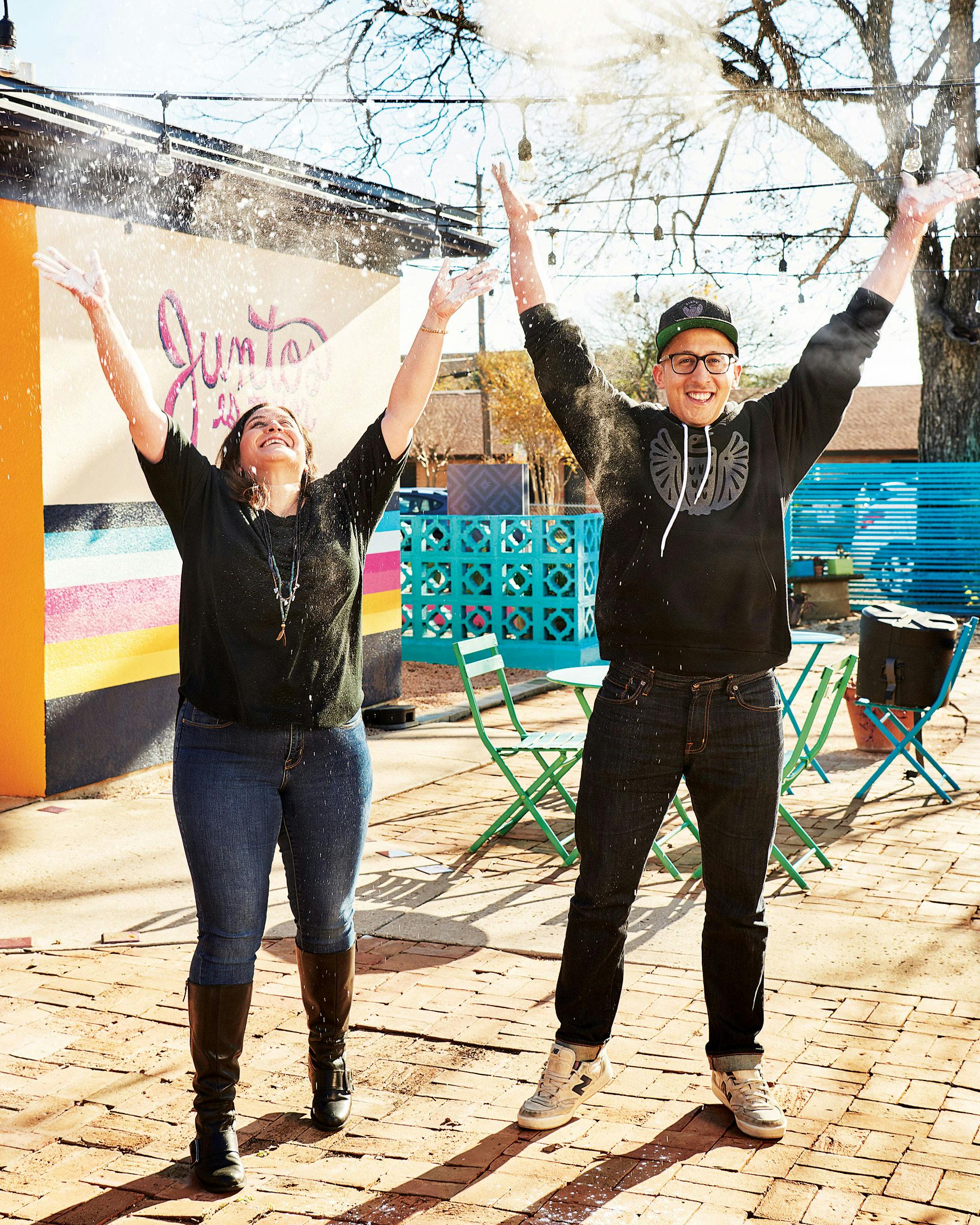
The Tortilla Magnates
Veronica and Miguel Garza
Veronica Garza made her first grain-free tortillas in 2010, in Laredo, after diagnoses of multiple autoimmune disorders severely restricted her diet. “I couldn’t go to a backyard barbecue and enjoy the food like everyone else did,” she says.
The product, which her grandmother declared better than her own homemade flour tortillas, gained some fans in Laredo, but the market for natural foods in the city was tiny. Veronica’s brother Miguel was living in Austin at the time, and he eventually connected with a community of entrepreneurs starting specialty food brands that challenged the industry giants. One of them, Katie Forrest (who started the meat-based protein bar company EPIC Provisions with her husband), inspired Miguel and his sister to build their business in the Capital City.
“I knew someone else would eventually make the product my sister had created, because it was just so good,” says Miguel, who acts as CEO, while Veronica is president and product developer. “We decided that we should leap without knowing what would happen.” Veronica drove a small batch of the tortillas to Austin to shop around to stores, and as soon as they started getting the product on shelves, it started flying off them.
Siete Family Foods now has three types of grain-free tortillas and three flavors of grain-free tortilla chips. It’s one of the darling brands at Whole Foods Markets around the country, and also available at natural-foods stores and a few mainstream grocers such as H-E-B. It might not sound like a revolution, but tortillas are a $4 billion market, and today they outsell both hamburger and hotdog buns in the United States. Siete is among the 2 percent of Latino-owned companies that exceed $1 million in annual revenue. Today, six members of the Garza family work there.
—Paul Knight

The Mash-Up Artists
Tatsu Aikawa and Takuya Matsumoto
A six-foot-long rattlesnake skin hangs on one wall. A mug full of chopsticks sits on the bar. Beer signs cast a glow on “lucky cat” statues. Look at the menu and you’ll find smoked brisket, barbecued eel with sansho peppers, and octopus fritters topped with chili and cheese. And you haven’t even gotten to the Japanese whiskey and cross-cultural cocktails like the Puff Puff Pass.
Where are you? In Austin, in the year’s most unpredictable culinary success story, Kemuri Tatsu-Ya. The hybrid of a Texas barbecue joint and a Japanese izakaya (think brewpub, but with sake) is the creation of chefs Tatsu Aikawa and Takuya “Tako” Matsumoto. The business partners and longtime Austin residents started the popular Ramen Tatsu-Ya in Austin in 2012. Three years later they took over the location of Live Oak Barbecue, which came with a trove of superlative tchotchkes. As they pondered their next step, a Central Texas road trip provided an aha moment. “I went to Lockhart with my family when they visited,” says Tatsu, “and ended up bringing back brisket for the employee meal. I put some on top of our ramen, and everybody loved it!”
The two chefs’ creativity landed Kemuri on the best-restaurant lists of Bon Appétit and GQ last year. It also foreshadowed another Austin venture that is being eagerly followed by the nation’s culinary community: Loro, an Asian smokehouse and bar from Tyson Cole, of Uchi fame, and Aaron Franklin, set to open this spring. The revolution has just begun.
—Patricia Sharpe
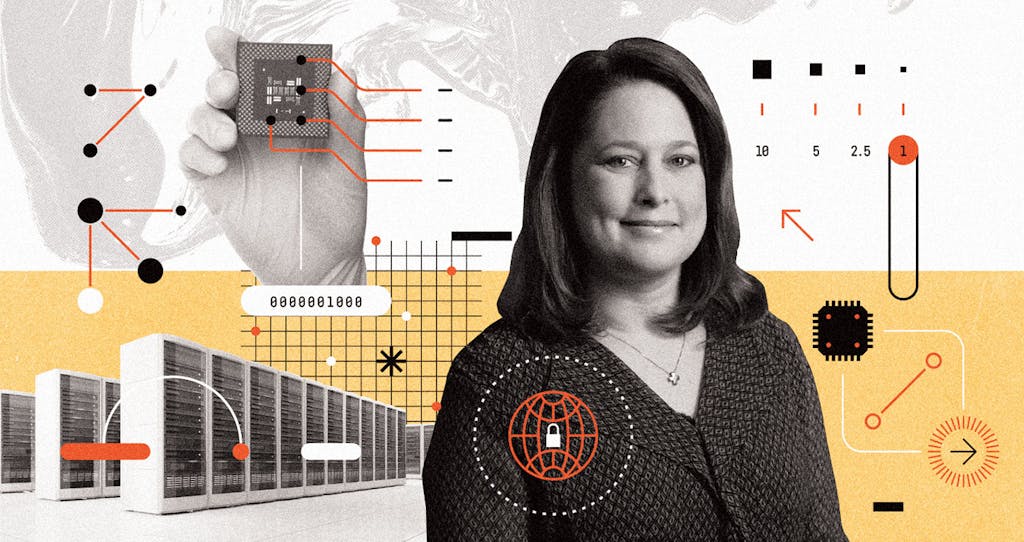
The Cybersecurity Coach
Nicole Beebe
In 2000, the U.S. military knew that American security involved a lot more than just protecting our land and air space. So officials in San Antonio’s armed forces community suggested that their neighbors at the University of Texas–San Antonio establish a cybersecurity program. Eighteen years later, Nicole Beebe, a former Air Force major and the current director of the Cyber Center for Security and Analytics at UTSA, helps oversee one of the most renowned cybersecurity programs in the country. “It’s one of our best-kept secrets,” Beebe says. “If you’re not in the field, you think of Silicon Valley and Austin for tech, and you think of D.C. for national security. People don’t think of San Antonio. But the federal government has located cyber here for decades, and we’ve grown an ecosystem for it.”
The demand for cybersecurity experts in San Antonio is high. In addition to a unit of the Air Force’s cyber-command, the National Security Agency’s Texas office is in the Alamo City, as is an office of the Secret Service’s Electronic Crimes Task Force and the FBI’s cybercrimes squad, as well as countless government contractors. To meet the need, UTSA’s program serves both degree-seeking students and professionals adding to their skill sets. “We have a lot of career-switchers,” Beebe says. “They’re not just programmers retooling—they come from every different field.”
—Dan Solomon

The Rescuer
Matthew Marchetti
Necessity, as the proverb goes, is the mother of invention. And when Hurricane Harvey brought its destructive deluge to the Houston area and much of the rest of Southeast Texas, last August, necessity was widespread. As the water and desperation rose, the chaos overwhelmed emergency services.
Twenty-seven-year-old data developer Matthew Marchetti, drawing on his past as an EMT, was on a boat in the city’s Memorial neighborhood on August 27, doing what he could to help. “It was a mess, though,” Marchetti recalls. “Nobody really knew what was going on. Everything seemed in disarray. We had multiple group messages going, and Facebook was going crazy, and all of these various communication platforms were trying to coordinate between rescuers and people who needed to be rescued.”
It was amid such chaos, from a leaky office with faltering electricity late that night, that Marchetti, with colleagues Nate Larson and Oliver Carter, built a web-based app in six hours that would go viral and help save thousands of Texans. CrowdSource Rescue, as the app is now known, fuses mapping and dispatching technologies to pair citizen rescuers with distress calls—effectively organizing and deploying volunteer armies where they’re most needed during natural disasters.
After Harvey, CSR was used during Hurricanes Irma, Nate, and Maria, as well as the Mexico City earthquake and California wildfires. It has facilitated tens of thousands of rescues. “It was neighbors helping neighbors. You know, all walks of life, all ethnicities, all ideologies are just like, ‘Let’s go over there and help people, not because we get anything, but just because we can help them. They need help,’ ” says Marchetti. “That was the most amazing thing. It was life-changing.” His isn’t the only life that was changed.
—David Courtney

The Internet’s Favorite Yogi
Adriene Mishler
With almost 3 million subscribers to her YouTube channel, Yoga With Adriene, and a sponsorship from Adidas, Austinite Adriene Mishler is more than a popular yoga instructor. She’s a new kind of star. Whereas many so-called YouTubers achieve their fame the grassroots way, Mishler was tapped by a movie director, in a turn of events that points to just how fundamentally insurgent technologies have become mainstream.
A former theater geek at Austin’s Crockett High, Mishler started teaching yoga shortly after graduation while she pursued her dream of being an actress. She played “cute female student” on an episode of Friday Night Lights and did voice-overs for some video games, but she didn’t quite become a star—until the director of a never-released movie in which she had acted spied an opportunity to build a yoga channel around her. Yoga With Adriene debuted in 2012 and took off as Mishler focused on making it approachable to anyone, not just the Lululemon set—which YouTube does a lot more handily than a studio. She does yoga in her dining room—sometimes with her dog, Benji, wandering into the frame. You follow along in your own home.
Mishler still acts, but her yoga persona is now a global brand. Adidas put her in an ad that played during the Academy Awards. And she’s expanded beyond YouTube, with a subscription service for online courses and a series of live events, where she leads yoga practices in front of sold-out crowds in Amsterdam, Berlin, Los Angeles, New York, and beyond. It didn’t happen conventionally, but she’s as big a star as she could have ever dreamed.
—Jason Stanford
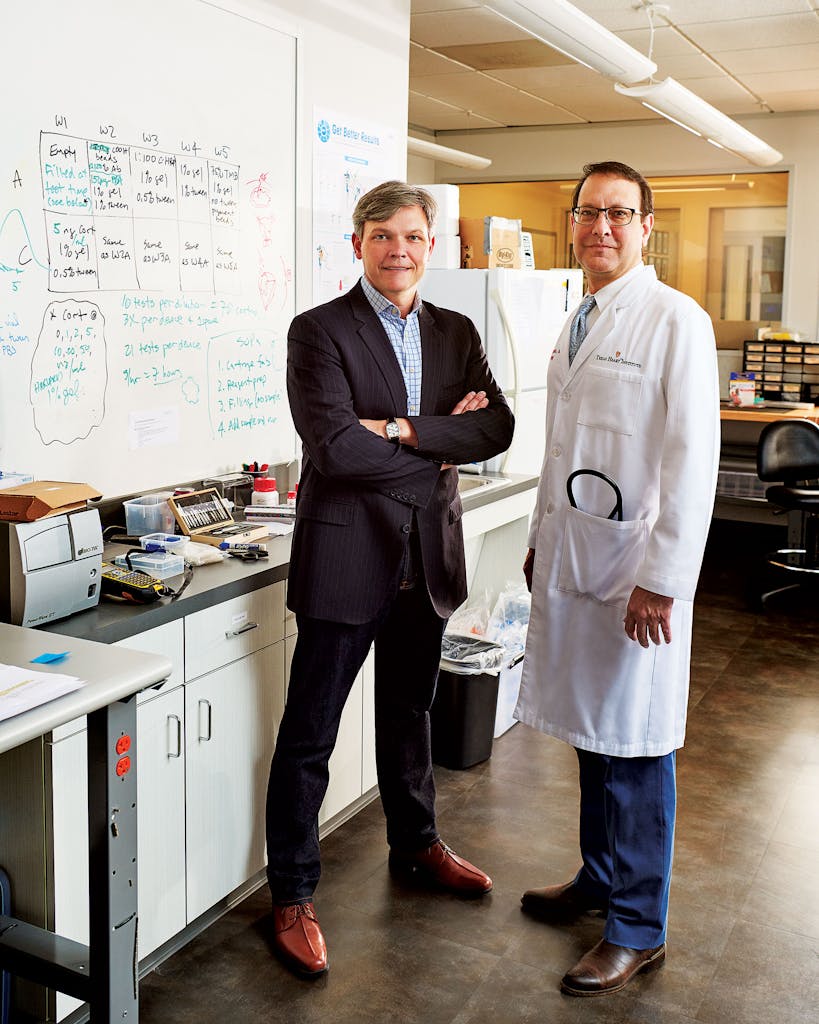
The Medical Inventors
Ben Hertzog and Reynolds Delgado III
Though Houston has held strong to its reputation for world-class medical care and research, it hasn’t kept pace with the Bay Area and Boston in turning that work into groundbreaking products and companies. Hoping to reverse this course, medical leaders in Houston have launched a string of innovation labs and incubators to nurture start-ups that could help close the gap. Perhaps the closest to bringing a major new medical device to market is Procyrion, a company that has developed a tiny heart pump called Aortix.
Unlike standard heart pumps, which require open-heart surgery, Aortix can be installed during a ten-minute outpatient procedure. Thinner than a pen, the device enters the body via catheter through the femoral artery, then perches downstream of the heart, in the descending aorta. There, it can pump up to six liters of blood per minute and act as a backup. In time, CEO Ben Hertzog says, Aortix could give an ailing heart enough leeway to rest and heal, while the extra blood flow could alleviate related kidney and lung problems.
Dreamed up a dozen years ago by Reynolds Delgado III, a cardiologist at the Texas Heart Institute and now Procyrion’s chief medical officer, Aortix successfully underwent its first human tests last year. The pump could be on the market by 2020 if the FDA gives its blessing. Hertzog is bullish on the city’s future prospects too. “If you are an entrepreneur in the medical field, Houston is the happy hunting ground. There is so much innovation here.”
—Sonia Smith

The People Designer
Doreen Lorenzo
The former president of the venerable design firm Frog, Doreen Lorenzo is one of the world’s leading thinkers on the power of design—not just how things look but how they work and how they work together. That puts her at the forefront of a so-called design thinking movement that has risen over the past decade, in part as a response to all the changes the tech world has brought to virtually every industry. Whereas computer scientists and engineers think about ideas in terms of their technical viability and MBAs in terms of their potential to make money, design thinkers take a “human-centered” approach to problem solving, Lorenzo says.
Which is why UT-Austin hired her to create the Center for Integrated Design in 2016. And it’s why, just a year later, the high demand for the few courses offered by the CID led to the creation of an entirely new school at UT, the School of Design and Creative Technologies, which is housed in the College of Fine Arts. The school has two purposes: to create a new generation of innovators who not only have good ideas but also the soft skills to sell the ideas and work through their implications, and to position students from nontechnical disciplines to get good jobs after they graduate. Partnerships with the likes of IBM, which hosted one of the new school’s fall courses at its Austin design studio, bring abstract concepts to life.
Lorenzo, now an assistant dean at UT, sees a bonus third purpose: “We want to create good people who can go out to the world and do things, whether for profit or nonprofit, that are good. That’s how you change the world.”
—Doyin Oyeniyi
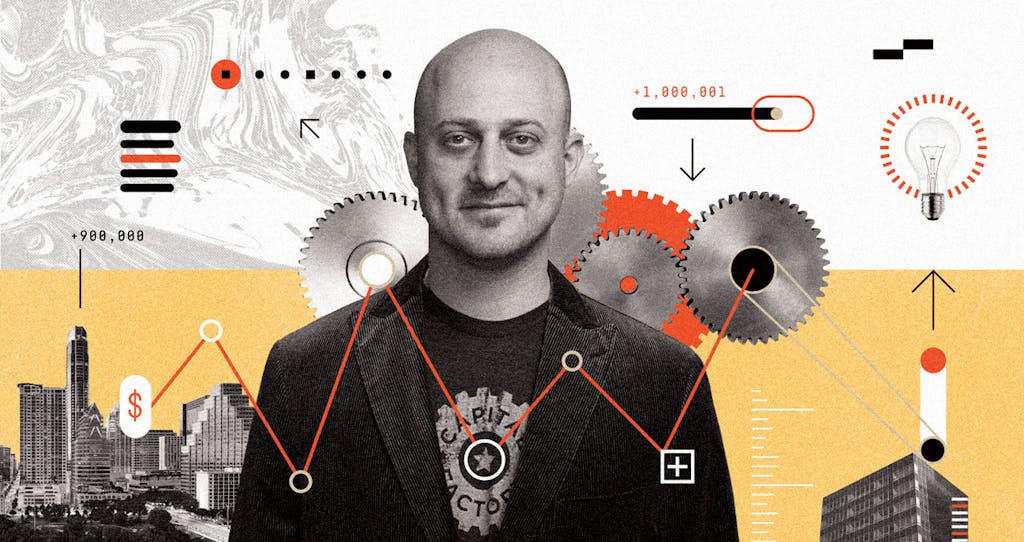
The Accelerator
Joshua Baer
Texas wasn’t big on many tech investors’ radars back in 2009, right after the bottom fell out of the economy. But serial entrepreneur Joshua Baer saw an opportunity in Austin. Between the city’s handful of large tech companies, the never-ending river of talent emerging from UT, and all the people who swoon over breakfast tacos every year during SXSW, he figured the vital pieces of a Silicon Valley–style start-up culture were just waiting to be stitched together.
In the years since, Baer’s creation, Capital Factory, has done just that, by honing a model in which start-up founders get professional mentorship, access to investors, and opportunities to collaborate with other entrepreneurs around the city.
More than a thousand companies have emerged from Capital Factory’s downtown headquarters and created tens of thousands of jobs. Baer, in the process, has become the human hub of the Austin tech scene, and Capital Factory an automatic stop on the Austin itineraries of tech royalty like Apple’s Tim Cook and Microsoft’s Satya Nadella.
Now Baer is taking the project statewide, launching a Capital Factory outpost housed in the Dallas Entrepreneur Center, which aims to turn the two cities into something like north and south campuses of one big start-up scene. He hopes to connect San Antonio and Houston in the future.
“For the past ten years, I’ve been beating the Austin drum,” Baer says. “But I know that Austin, by itself, is never going to beat Silicon Valley. Dallas and Houston are much bigger markets than Austin but much further behind in becoming the next big tech hub. But Texas—the combination of four of the eleven largest cities in the country, with fifty Fortune 500 companies and the tenth-largest economy in the world? Texas today can take on any other city, any other state, even any other country in the world.”
—Dan Solomon

The Empowerer
Michelle Williams
Urban communities are very entrepreneurial—but often by force, not choice. You have to figure out a way to supplement your income to make ends meet,” says Michelle Williams, the Dallas Entrepreneur Center’s Executive Director for the Southern Region, where she aims to give entrepreneurs from disadvantaged communities the same kinds of opportunities that start-up founders in other areas often take for granted.
Williams is spearheading the center’s expansion south of Interstate 30, which will see the downtown-based nonprofit co-working space open three southern Dallas locations—one at the redeveloped Red Bird Mall, plus two satellites at UNT Dallas and Paul Quinn College. The Southern Dallas Entrepreneur Network, as it’s called, isn’t just meant to create work spaces for people running small businesses but to help them grow and find funding and partnerships, both with one another and with their DEC peers downtown.
“We want to empower the person who makes crafts on the side and help her understand that, yes, she’s an entrepreneur too,” Williams says. “When it comes to women- and minority-owned businesses, there’s a lot of second-guessing of their legitimacy. But they’re full-fledged entrepreneurs the same way that the person who built Uber is.”
—Dan Solomon

The Next Generation
Mikaila Ulmer
A few years ago, when Mikaila Ulmer was stung by a bee, her parents explained that bees were an important and endangered part of the ecosystem. A new Austin-based business was born. Using her great-grandmother’s recipe, Mikaila set up a lemonade stand and donated 10 percent of her proceeds to save the bees. In 2015 she scored an investment from Daymond John on Shark Tank, and today Me & the Bees Lemonade is available in thirty states and in some three hundred Whole Foods and Wegmans stores. Now thirteen, when she’s not attending school or running her business, Mikaila works on her new nonprofit, the Healthy Hive Foundation.
Rohit and Sidharth Srinivasan
When Rohit and Sidharth Srinivasan (seventeen and fifteen years old) first visited an Indian orphanage, in 2013, as ambassadors for a nonprofit called the Miracle Foundation, they realized how few resources the kids had for exploring STEM concepts, like rocketry. Passionate young engineers themselves, the brothers from Austin co-founded Trashbots, which makes a $100 kit that enables kids to build robots using everyday detritus such as Popsicle sticks and water bottles. Made in partnership with Paul Austin, a software engineer from National Instruments, the Trashbots require limited electricity and no Wi-Fi. About six hundred kits have been preordered, and the product hits Indiegogo.com this month.
Bishop Curry
In 2016, tragedy struck in the neighborhood where Bishop Curry was living in McKinney: a six-month-old who’d been left in a parked car died of heatstroke. Motivated by the news, Curry drew a picture of a device that would prevent hot-car deaths and took it to his father, who is an engineer for Toyota. It would attach to a car seat headrest, identify if a child is alone in a hot car, and call the parents’ phones (then the authorities, if they don’t answer)—all while blowing cold air. Over the past year, having more than doubled his GoFundMe goal of $20,000, eleven-year-old Curry has evolved his idea into a prototype for a device called Oasis, which he hopes to patent by this summer.
—Katy Vine
- More About:
- Business







